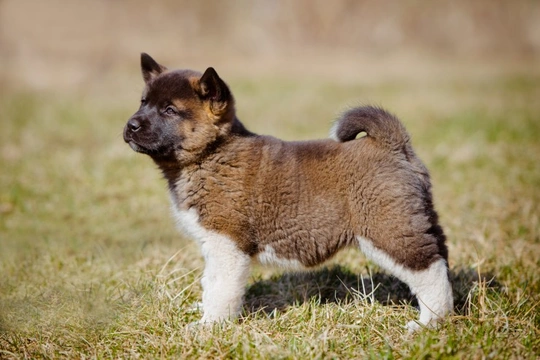
How to teach an Akita puppy to come when you call their name
The Akita is a large dog breed that is very loyal and loving with their owners, but that can be rather speculative with strangers. They require an experienced owner and handler to help the dog to get off on the right foot and establish their position in the pack – which means starting to train the dog early on, as well as providing them with plenty of opportunities to socialise with others and begin to learn the rules about appropriate conduct with other dogs and people.
Akitas are intelligent, quick to learn, and often very single minded – and they can be prone to inappropriate dominance and pushiness if they are not handled and managed correctly.
One of the most important skills that all dogs need to learn is to recognise and respond to their name and teaching your Akita puppy this forms the beginning of establishing responsiveness and good recall skills in your dog as they get older.
However, because Akitas are smart and easily bored, it is important to go about this the right way, to avoid problems further down the line when your dog is older.
In this article, we will look at how to teach an Akita puppy to come when you call their name, as well as some pitfalls to avoid. Read on to learn more.
Establishing your dog’s name
First of all, the name you choose for your puppy will actually have a direct impact on how well they recognise, understand, and respond to it, and so this is something to pick with care!
A good name for an Akita puppy should be short, distinctive and clear – try to stick to two syllables or three at the most and ensure the sound that your dog’s name makes is both distinctive, and does not sound similar to another word you use a lot, or another command you use for your dog.
You should begin using your pup’s name as soon as possible, but also avoid overusing it, or saying it so often without meaning that it becomes background noise to your dog. You should also be consistent with the name, and not use variants and nicknames for commands as your dog may become confused.
Engagement and motivation
Choosing a name that will work for your Akita is the first step, and next, you need to ensure that the name has meaning for your dog and causes them to look to you and pay attention.
You should use your dog’s name to catch their attention and get them to look at you, so that when you do need to apply a command, you will already have your dog’s attention.
Engaging your dog in this way relies upon finding the right motivation for them, or giving them a reason to look to you and respond to their name – so don’t just use your dog’s name when you’re telling them off, or to curtail their fun.
Establish your dog’s name by combining motivation with engagement – call your dog’s name and give them a treat or reward when they respond, and work on practicing this so that your dog automatically looks to you and comes when encouraged, because they have a chance of earning a reward.
Action and reward
The process of getting your dog to respond to their name and come when called is based on the principle of action and reward – your dog performs an action that you request, and they are given something they value in return.
Keep plenty of training treats to hand, and get into a routine of calling your dog by name in a range of different situations and faced with various stimulus, and praise and reward them with a treat when they respond. When your dog responds reliably, begin to phase out the treats, using them less regularly. Always praise your dog for responding appropriately, even when you’re not giving out treats.
When your Akita begins to respond to your call consistently, start taking them out to work on their skills, slowly building up to busier environments and situations where competing stimulus such as play and other dogs may divide your dog’s attention.
The key to achieving reliable recall from your Akita is consistency, and not trying to get ahead of yourself and expect too much from your dog – don’t rush the process, or you are apt to store up problems for yourself further down the line.
Pitfalls to avoid
Avoid using your dog’s name just to tell them off or end their play – otherwise they will associate their name and recall with negative things, and not even a treat will entice them to comply if they get more value from what they are already doing.
Make sure you have your dog’s attention before you give them their command or instruction – calling after a dog that isn’t paying attention to you is futile!
Treat recall and name response as a progressive training exercise that should be approaches slowly over the course of several weeks or months. Begin with your Akita close by and without a lot of competing stimulus, and gradually broaden your horizons to more highly-loaded situations.
If your dog doesn’t respond first time or if they are actively ignoring you, this can be very frustrating, and it is easy to be cross or exasperated with your dog when they do finally return. However, telling them off will, to them, translate as being told off for returning – which will discourage them from doing so next time.
Always praise and reward your dog when they do look to you and return – even if they didn’t do it when you first asked!



